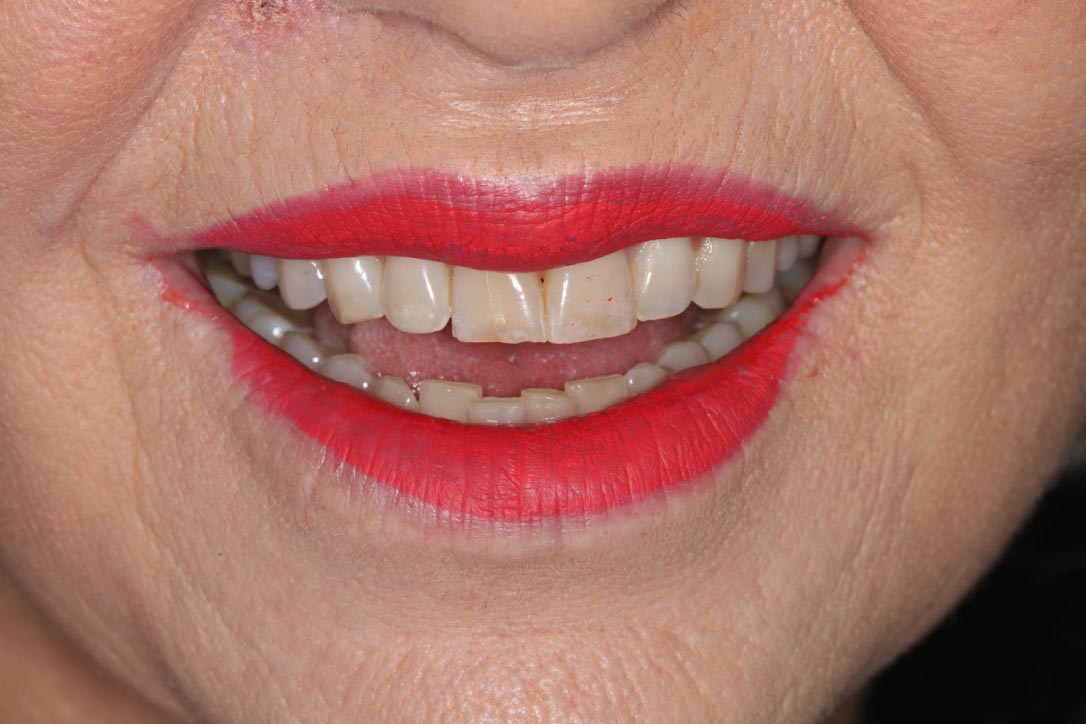 Kamala Aydazada explains what composite bonding is and how it could help build your dental practice.
Kamala Aydazada explains what composite bonding is and how it could help build your dental practice.
A growing number of people are opting for cosmetic treatments for all parts of their body, teeth are no different. Yet while the search for the ‘picture perfect’ smile has resulted in increased demand for cosmetic dental procedures, patients have simultaneously become much more educated about the damage some of these solutions can have on their teeth.
This remarkable shift in patient attitudes towards dentistry, in which patients are much more well-informed before they even make an appointment, has made composite bonding a much more popular choice for patients wanting to enhance their smile.
What is composite bonding?
Composite bonding involves taking a thin layer of adhesive resin material, and attaching it to, and sculpting around, the tooth structures. It aims to improve the shape and appearance of teeth. It is a less invasive alternative to porcelain veneers and crowns.
This solution is available to patients who would like a whole range of improvements. From restoring minor enamel damage such as chips and fractures, to repairing various types of tooth wear, covering minor discolouration or even closing the gaps between teeth.
The resin colour is carefully chosen to match patients’ teeth so it appears as natural as possible. We add the resin bonding gradually and shape it around the tooth, hardening with a UV light before polishing. In some cases, patients carry out orthodontic treatment or teeth whitening prior to bonding procedures to achieve the best results.
It is important to understand that the colour of composite bondings, or any cosmetic restoration for that matter, is permanent and is not going to change with teeth whitening. This is why if patients wish to brighten up their smile, it is advisable to do any whitening prior to adding the restorations.
The consultation process
Cosmetic dentistry has become increasingly popular in recent years, fuelled by the ‘perfect smiles’ people see on TV and Instagram. Many search for treatments to improve their confidence. It is amazing to see how many people who were afraid to smile with an open mouth leave an appointment with a wide grin on their face following a cosmetic procedure.
Composite bonding thankfully means that, unlike with other methods, patients will not suffer from permanent damage to their teeth.
When patients first consider cosmetic dentistry, many are concerned about pain, injections, and permanent tooth damage. The advantage of composite bonding is that it doesn’t require tooth preparation or the removal of enamel. This makes it a pain-free procedure, without the need for injections. In many cases, we can perform the whole treatment in a single appointment – ideal for patients with busy lifestyles.
Composite bondings are also significantly less costly than other cosmetic restorations. With good oral hygiene and regular dental visits, they could last for years. Their affordability has made them particularly popular with younger patients.
Patient appointments begin with an initial cosmetic consultation. This is a discussion about the aspects of their smile they are not happy with and wish to improve. I recommend starting with the least invasive treatment and gradually building up to other procedures when a patient would like further change.
Composite bonding alternatives
Before undergoing any treatments and procedures, patients should always have a thorough consultation with their dentist about all their options. Even in cases where patients have spent a lot of time conducting their own research, it is vitally important they are presented with every alternative and understand what treatment is most appropriate, based on the condition of their teeth and what they hope to achieve.
One of the most traditional alternatives to composite bondings are porcelain veneers and crowns. Veneers are thin, laboratory-made shells of tooth-coloured material, which fit over the front surfaces of your teeth. These often involve removing some of the tooth structure, several dental appointments and more treatment time.
Alternatively, crowns are laboratory-made ‘caps’ covering the entire tooth surface. These are more invasive as they require significant tooth structure removal. That said, there can be aesthetic advantages to having porcelain veneers, particularly in more severe cases, and they can have better longevity and require less maintenance. The flawless smile modelled by many celebrities is often down to veneers.
Why offer composite bonding?
When considering what treatments to offer patients, it is easy to select traditional favourites already familiar to patients.
Yet composite bonding has numerous advantages for patients. From the lack of pain through to the short appointment times. This makes it a valuable procedure to offer.
Even patients who have never heard of it before often opt for it over traditional treatments when they understand the benefits and appreciate the differences between composite bonding, veneers and caps. Not all patients are looking for an extreme change to their smile, just a small adjustment here and there. Composite bonding is ideal for that.
What do patients think?
Amanda Eliasch, a well-known filmmaker and artist who has exhibited shows all over the world, including Los Angeles in the US, wanted to make some minor improvements to the colour and shape of her teeth.

After a careful smile assessment, we came up with the most natural and least invasive treatment option for her. This was a combination of teeth whitening and composite bondings.
We started with professional teeth whitening to improve the overall colour of her teeth, followed by selective composite bondings on her upper and lower front teeth.
After the treatment, Amanda said on social media: ‘My teeth look so LA! Better than a facelift – no pain and a few hours later I looked completely different. Ten years younger and fresher. I say if you can afford to take care of your teeth, do.’



